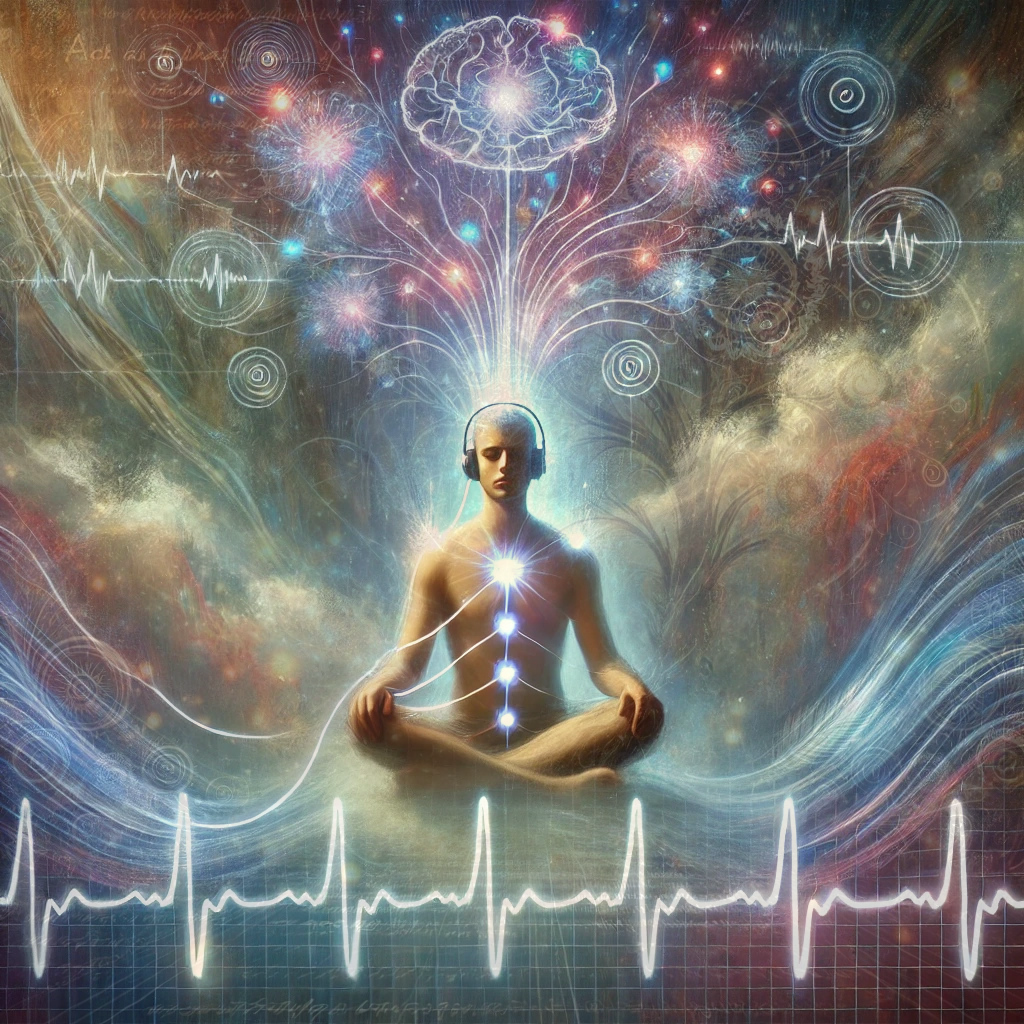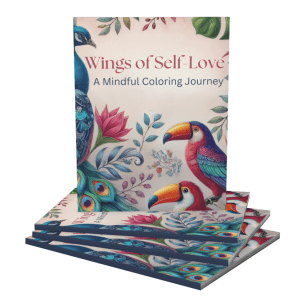
Anxiety is one of the most common mental health challenges, affecting millions worldwide. While traditional treatments such as medication and therapy play a vital role in managing anxiety, alternative approaches are gaining traction for their non-invasive and empowering benefits. Biofeedback is one such technique that allows individuals to take control of their physiological responses, helping them reduce anxiety and improve overall well-being.
This article explores the science, research, and benefits of biofeedback for anxiety management, providing a comprehensive understanding of how this technique works, its effectiveness, and how you can incorporate it into your mental wellness journey.
What is Biofeedback?
Biofeedback is a mind-body technique that helps individuals gain voluntary control over automatic bodily functions such as heart rate, breathing, muscle tension, and skin temperature. Using sensors and real-time data feedback, people can learn to regulate their physiological responses to stress and anxiety.
How Biofeedback Works
During a biofeedback session:
- Sensors are attached to specific areas of the body to monitor physiological functions.
- Real-time data is displayed on a screen, allowing individuals to observe their body’s response to stressors.
- Guided training from a therapist helps the individual learn techniques to modify their physical responses, promoting relaxation and self-regulation.
Over time, individuals develop skills to manage stressors outside therapy sessions, making biofeedback a long-term solution for anxiety reduction.
| Science | Research | Benefits |
|---|---|---|
| Biofeedback helps individuals gain awareness and control over their physiological responses to stress and anxiety13. | Studies have shown significant reductions in stress markers, including cortisol levels and blood pressure, after HRV biofeedback training3. | Reduces symptoms of stress, anxiety, and depression24. |
| It regulates the autonomic nervous system, shifting balance from sympathetic (fight-or-flight) to parasympathetic (rest-and-digest) activation3. | A meta-analysis of 14 studies found that biofeedback improved both physiological and psychological indicators of stress3. | Enhances relaxation and promotes better stress management13. |
| Biofeedback can be tailored to individual psychophysiological profiles, using EMG, thermal, GSR, heart rate, respiration, or EEG feedback4. | Research on students showed significantly lower post-test state and trait anxiety after biofeedback intervention4. | Offers a non-pharmacological approach to direct symptom reduction4. |
Biofeedback, when combined with other stress management techniques, provides a powerful tool for anxiety relief and mental wellness. It allows individuals to learn self-regulation of physiological responses, leading to improved stress management and overall mental health134.
Types of Biofeedback for Anxiety Management
Several types of biofeedback techniques are used to help individuals manage anxiety effectively:
- Electroencephalography (EEG) Biofeedback (Neurofeedback)
- Measures brainwave activity and helps individuals train their brain to function in a calmer state.
- Studies show neurofeedback can reduce symptoms of generalized anxiety disorder (GAD). (Mayo Clinic)
- Heart Rate Variability (HRV) Biofeedback
- Focuses on regulating heart rate to improve emotional stability and stress resilience.
- Research supports HRV biofeedback in reducing anxiety and improving emotional regulation. (Cleveland Clinic)
- Electromyography (EMG) Biofeedback
- Monitors and reduces muscle tension, often used for people experiencing anxiety-induced muscle tightness and chronic pain.
- Electrodermal Activity (EDA) Biofeedback
- Measures sweat gland activity to track emotional arousal and stress levels.
- Useful in managing social anxiety and panic disorders.
Each type of biofeedback focuses on different physiological responses, allowing individuals to choose the method best suited for their needs.
Scientific Evidence: Does Biofeedback Work for Anxiety?
Multiple scientific studies and meta-analyses have demonstrated that biofeedback is an effective tool for reducing anxiety.
- A meta-analysis in Psychological Medicine found that HRV biofeedback significantly reduces stress and anxiety, making it a viable treatment option.
- A systematic review found that biofeedback improves symptoms of generalized anxiety disorder (GAD), PTSD, and panic disorders by teaching individuals self-regulation techniques.
- The Cleveland Clinic states that biofeedback helps manage stress, anxiety, and even insomnia by training individuals to control physiological responses to stressors.
- A study published in Psychiatric Times highlights how biofeedback therapy improves autonomic nervous system regulation, which is critical for individuals with anxiety disorders.
The evidence supports biofeedback as an effective, research-backed approach for reducing anxiety and improving emotional resilience.
Benefits of Biofeedback for Anxiety Management
Biofeedback offers a range of benefits for individuals dealing with anxiety, including:
✅ Non-Invasive & Drug-Free Treatment
- Ideal for those who want to avoid medication or reduce dependency on anti-anxiety drugs.
✅ Improved Self-Awareness
- Helps individuals recognize how their thoughts and emotions influence their physiological responses.
✅ Long-Term Stress Management Skills
- Teaches practical techniques for managing anxiety, such as breath control and muscle relaxation.
✅ Customizable & Complementary Therapy
- Can be used alongside other treatments like cognitive-behavioral therapy (CBT) or meditation.
✅ Enhances Overall Well-Being
- Studies indicate biofeedback can improve sleep, focus, and emotional resilience.
Frequently Asked Questions (FAQs)
1. What mental health conditions can biofeedback help treat?
Biofeedback has been effective in managing:
- Anxiety disorders (GAD, social anxiety, panic disorder)
- Post-traumatic stress disorder (PTSD)
- Depression
- Insomnia
- ADHD
- Chronic pain conditions
For best results, it is often combined with therapy or mindfulness practices. (Cleveland Clinic)
2. How many biofeedback sessions are needed to see results?
Most people experience noticeable improvements after 5–10 sessions, though some may need ongoing therapy depending on the severity of their anxiety.
3. Are there any side effects of biofeedback?
Biofeedback is safe and non-invasive. Some individuals may feel frustration in the beginning while learning self-regulation, but there are no significant risks.
4. Can children and teens benefit from biofeedback?
Yes! Research shows that biofeedback helps children and adolescents manage anxiety, ADHD, and stress-related disorders effectively.
5. How can I find a qualified biofeedback therapist?
Look for professionals certified by the Biofeedback Certification International Alliance (BCIA) or seek recommendations from medical professionals.
How to Get Started with Biofeedback for Anxiety
If you’re interested in trying biofeedback for anxiety management, consider the following steps:
1. Consult a Healthcare Provider
A licensed therapist or doctor can help determine if biofeedback is right for you.
2. Find a Certified Biofeedback Therapist
Search for practitioners certified by BCIA or visit mental health clinics offering biofeedback.
3. Try At-Home Biofeedback Devices
There are mobile apps and wearable biofeedback devices available for at-home use.
4. Practice Regularly
Like any therapy, consistency is key—regular practice enhances results.
Conclusion: Is Biofeedback Right for You?
Biofeedback is a science-backed, non-invasive approach to anxiety management that empowers individuals to take control of their mental health. By incorporating biofeedback into a comprehensive treatment plan, individuals can build long-term resilience, reduce anxiety, and improve overall well-being.
???? Call to Action: If you’re interested in exploring biofeedback, speak with a healthcare provider or certified biofeedback therapist to see if this technique is right for you!
Additional articles on reducing anxiety:
- The Science of Neurofeedback for Anxiety: How Brain Training Can Help You Find Relief
- Stoic Practices for Inner Peace: Scientifically Proven Ways to Stay Calm in Chaos
- Best Anxiety Podcasts for Stress Relief and Mental Health: Science-Backed Benefits & Top Picks
- How to Build a Daily Routine to Soothe Anxiety: Science-Backed Strategies for Stress Relief
- Spending Time in Nature for Anxiety Relief: Science-Backed Benefits and How to Use It
- Hypnotherapy for Anxiety: Science-Backed Benefits, How It Works & FAQs
- How Forgiveness Heals Anxiety: The Science, Benefits, and Steps to Let Go
- Self-Compassion and Anxiety: The Science-Backed Path to Inner Calm and Resilience
- How Gratitude Practices Reduce Anxiety: Science, Research, and Benefits
- How Meditation Can Help Calm Anxiety: A Scientific Perspective




Leave a Reply